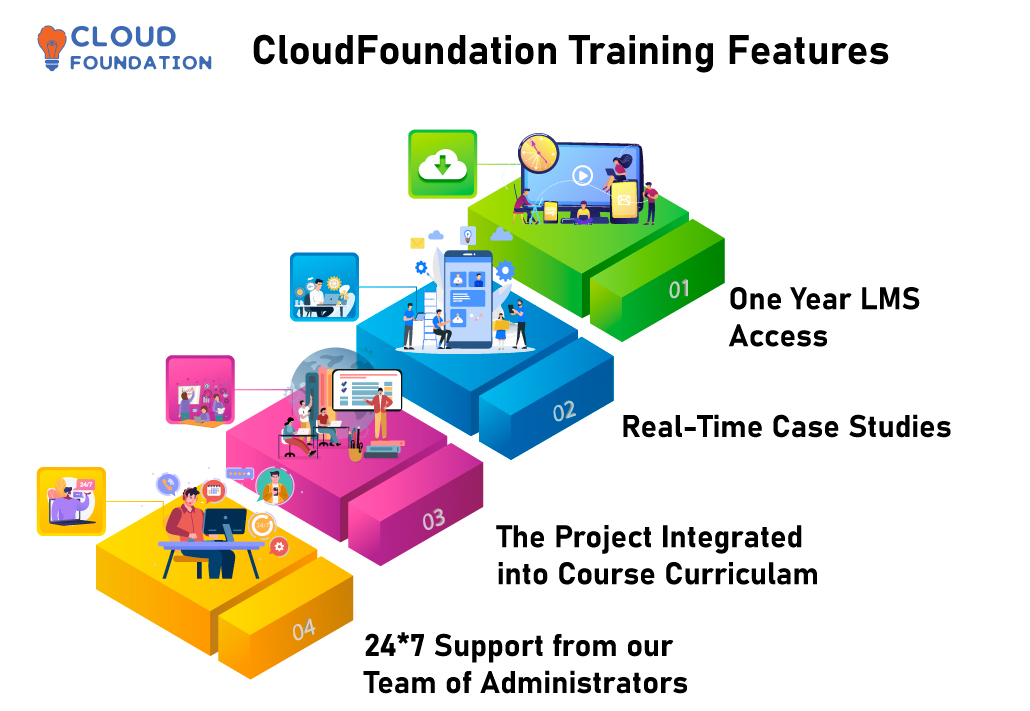Certified Secure Software Lifecycle Professional Training
⏰24 hours | ▶️ 24 Videos | 📣 9268 Participants | 🎓 3650 Reviews | 4.8 ⭐⭐⭐⭐⭐
Choose a Plan that Works for You
Self Paced
- Advanced sessions
- Interview Q&A
- Free study Materials
- Premium Technical support
Instructor Led Live Training
- Live Instructor
- Advanced sessions
- Interview Q&A
- Premium Technical Support
Corporate Training
- Live Instructor
- Advanced sessions
- Interview Q&A
- Premium Technical Support
Upcoming Batches PST
Weekday
| June 12(1 HR A DAY) |
| 07:00 PM PST |
| Enroll Now → |
Weekday
| June 27(1 HR A DAY) |
| 07:00 AM PST |
| Enroll Now → |
Weekend
| June 28(1 HR A DAY) |
| 07:00 PM PST |
| Enroll Now → |
Upcoming Batches IST
Weekday
| June 13(1 HR A DAY) |
| 07:30 AM IST |
| Enroll Now → |
Weekday
| June 27(1 HR A DAY) |
| 07:30 PM IST |
| Enroll Now → |
Weekend
| June 29(1 HR A DAY) |
| 07:30 AM IST |
| Enroll Now → |
Course Description
Certified Secure Software Lifecycle Professional (CSSLP) Training prepares you to understand the features of CSSLP.
Certified Secure Software Lifecycle Professional focuses on application security. Experience in a specific field can give you an added advantage.
CSSLP course takes you to learn with the Real-Time Scenarios that can be useful for understanding very well.
You can schedule a free online demo class with us to geta brief idea about the course.
Earning the CSSLP certification promotes your career with multiple opportunities.

Course Content
1 .Secure Software Concepts
- Core Concepts
- Security Design Principles
2. Secure Software Requirements
- Define Software Security Requirements
- Identify and Analyze Compliance Requirements
- Identify and Analyze Data Classification Requirements
- Identify and Analyze Privacy Requirements
- Develop Misuse and Abuse Cases
- Develop Security Requirement Traceability Matrix (STRM)
- Ensure Security Requirements Flow Down to Suppliers/Provider
3. Secure Software Architecture and Design
- Perform Threat Modeling
- Define the Security Architecture
- Performing Secure Interface Design
- Performing Architectural Risk Assessment
- Model (Non-Functional) Security Properties and Constraints
- Model and Classify Data
- Evaluate and Select Reusable Secure Design
- Perform Security Architecture and Design Review 3.9
- Define Secure Operational Architecture (e.g., deployment topology, operational interfaces)
- Use Secure Architecture and Design Principles, Patterns, and Tools
4. Secure Software Implementation
- Adhere to Relevant Secure Coding Practices (e.g., standards, guidelines and regulations)
- Analyze Code for Security Risks
- Implement Security Controls (e.g., watchdogs, File Integrity Monitoring (FIM), anti-malware)
- Address Security Risks (e.g. remediation, mitigation, transfer, accept) Securely Reuse Third-Party Code or Libraries (e.g., Software Composition Analysis (SCA))
- Securely Integrate Components
- Apply Security During the Build Process
5. Secure Software Testing
- Develop Security Test Cases
- Develop Security Testing Strategy and Plan
- Verify and Validate Documentation (e.g., installation and setup instructions, error messages, user guides, release notes)
- Identify Undocumented Functionality
- Analyze Security Implications of Test Results (e.g., impact on product management, prioritization, break build criteria)
- Classify and Track Security Errors
- Secure Test Data
- Perform Verification and Validation Testing
6. Secure Software Lifecycle Management
- Secure Configuration and Version Control (e.g., hardware, software, documentation, interfaces, patching)
- Define Strategy and Roadmap
- Manage Security Within a Software Development Methodology
- Identify Security Standards and Frameworks
- Define and Develop Security Documentation
- Develop Security Metrics (e.g., defects per line of code, criticality level, average remediation time, complexity)
- Decommission Software
- Report Security Status (e.g., reports, dashboards, feedback loops)
- Incorporate Integrated Risk Management (IRM)
- Promote Security Culture in Software Development
- Implement Continuous Improvement (e.g., retrospective, lessons learned)
7. Secure Software Deployment, Operations, Maintenance
- Perform Operational Risk Analysis
- Release Software Securely
- Securely Store and Manage Security Data
- Ensure Secure Installation
- Perform Post-Deployment Security Testing
- Obtain Security Approval to Operate (e.g., risk acceptance, sign-off at appropriate level)
- Perform Information Security Continuous Monitoring (ISCM)
- Support Incident Response
- Perform Patch Management (e.g. secure release, testing)
- Perform Vulnerability Management (e.g., scanning, tracking, triaging)
- Runtime Protection (e.g., Runtime Application Self-Protection (RASP), Web Application Firewall (WAF), Address Space Layout Randomization (ASLR))
- Support Continuity of Operations
- Integrate Service Level Objectives (SLO) and Service Level Agreements (SLA) (e.g., maintenance, performance, availability, qualified personnel)
8. Secure Software Supply Chain
- Implement Software Supply Chain Risk Management
- Analyze Security of Third-Party Software
- Verify Pedigree and Provenance
- Ensure Supplier Security Requirements in the Acquisition Process
- Support contractual requirements (e.g., Intellectual Property (IP) ownership, code escrow, liability, warranty, End-User License Agreement (EULA), Service Level Agreements (SLA))
FAQ’s
❓ Do you offer any discount/offer?
✅ Yes, offers keep changing from time to time. You can chat with us or call our training coordinator for more details.
❓ Is there any demo video which I can watch before enrolling to the course?
✅ Yes, we have provided a Demo video section on each course page so that you can get a glimpse into the course you want to enroll.
❓ How soon after signing up would I get access to the learning content?
✅ Yes, we will provide access to all the learning materials after the complete payment for the course.
Related Blogs
Drop US a Query
Suggested Courses




MuleSoft Training
⭐⭐⭐⭐⭐
😃 221 Learners




Pega Training
⭐⭐⭐⭐⭐
😃 391 Learners




Rpa Training
⭐⭐⭐⭐⭐
😃 106 Learners




WorkDay Training
⭐⭐⭐⭐⭐
😃 158 Learners
A few of our students
















Contact Us